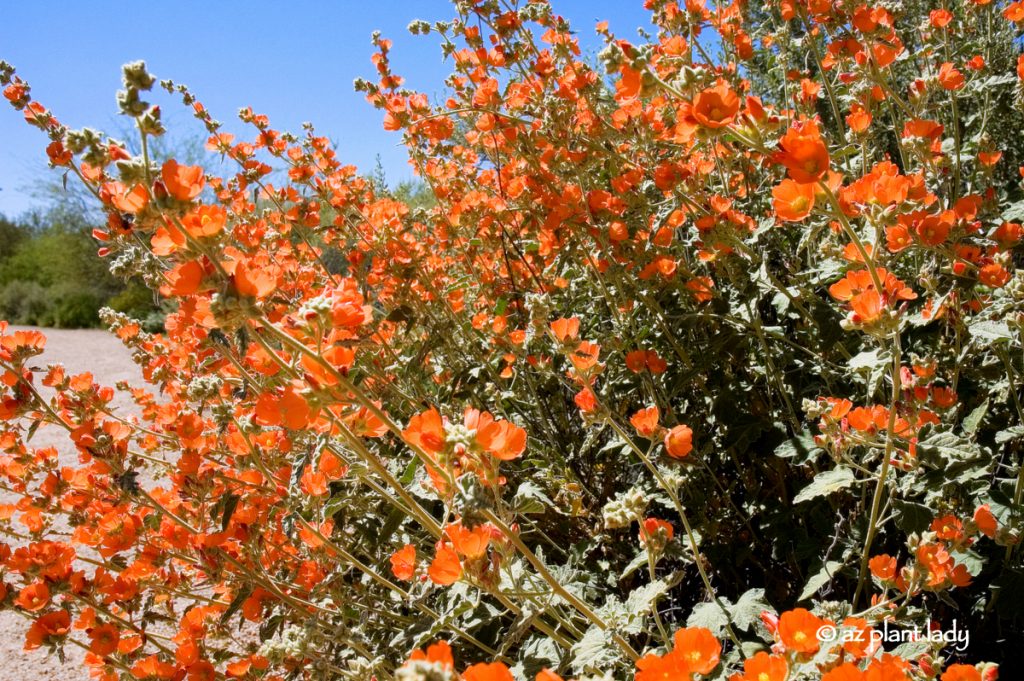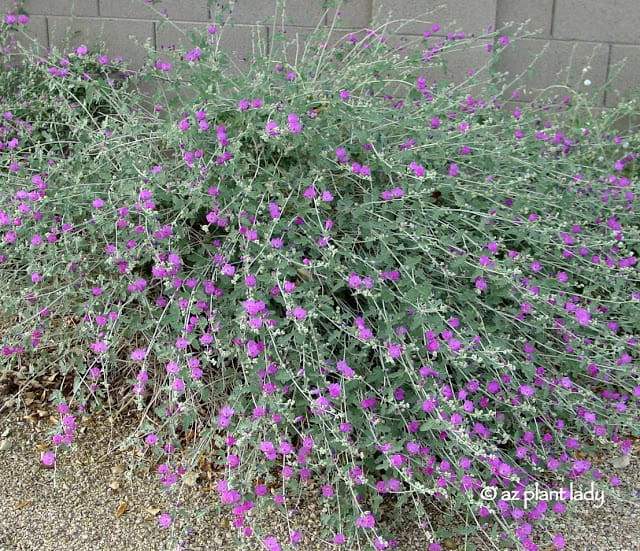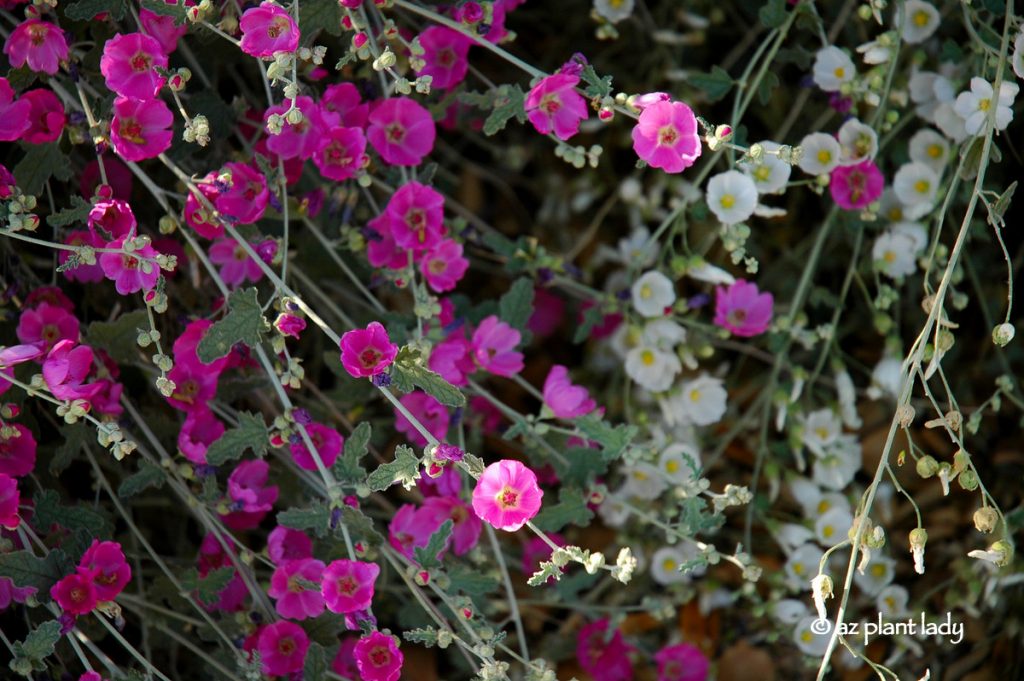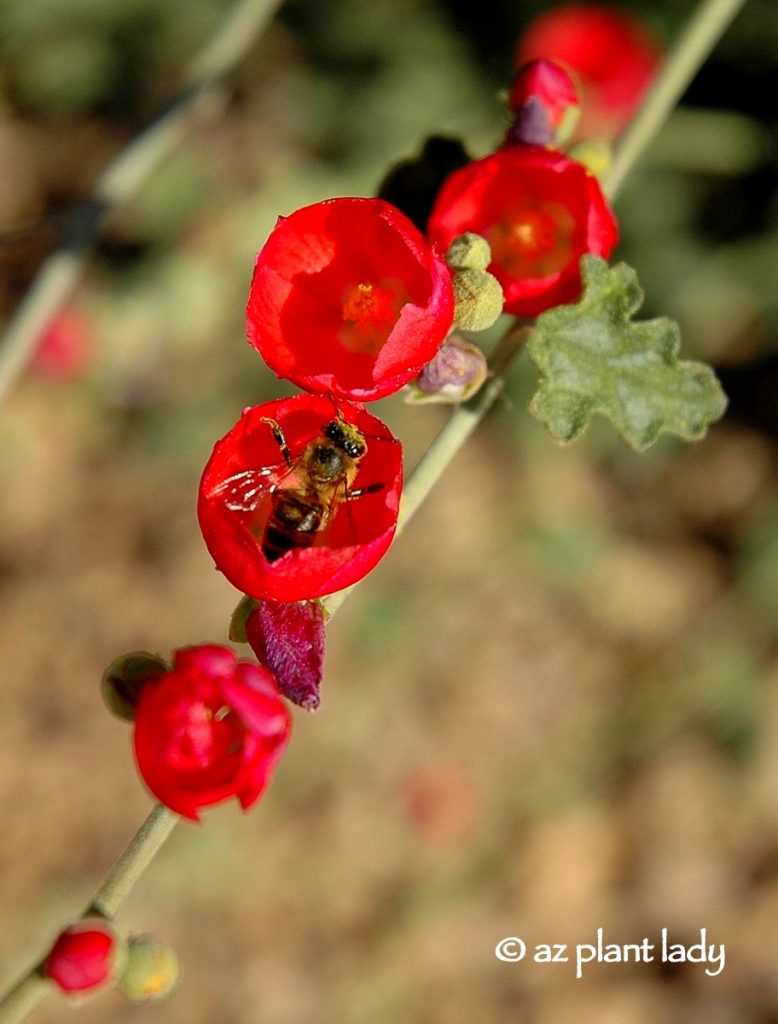Globe mallow (Sphaeralcea ambigua), both drought tolerant and beautiful, brings a unique “cottage-garden” feel to the desert plant palette along with some surprises. In spring a flush of colorful flowers are produced that will cause people to stop in their tracks. After that, globe mallow will bloom off and on throughout the summer and fall.
This shrubby, perennial is native to the Southwestern areas of North America where it is found growing along washes and rocky slopes. They grow quickly and reach approximately 3 ft. X 3 ft. in size. Globe mallow is cold hardy to about 20 degrees F.
Although most globe mallow plants produce orange flowers, they are available in other colors including pink, purple, white, red and shades in between. At the nursery, you will usually see the orange flowered variety available. However, some growers are beginning to stock selections of globe mallow in different colors. But buyer beware; unless specially marked or blooming, you don’t know exactly what color flower you will end up with.

Often, the surprise occurs after you plant them and wait to see what color the flowers will be. I bought four globe mallow, out of bloom, for my garden and ended up with one red, two pink and one white. For those who do not like surprises in the garden, you can wait and buy them in bloom in the spring.
USES

Globe mallow attracts hummingbirds as well as butterflies. They serve as a colorful backdrop for small perennials or small cacti. Consider planting with any of the following plants for a colorful desert flower garden – penstemon, desert marigold, ruellia, and blackfoot daisy. This beautiful but tough plant does best in full sun and performs well in areas with hot, reflected heat. Do not plant in shady areas as this will cause them to grow leggy.
Globe mallow do self-seed, and the seedlings can be moved and transplanted in the fall if desired. They are used frequently for re-vegetation purposes because they grow readily from seed.
MAINTENANCE
This pretty perennial is very low-maintenance. No fertilizer or amendments to the soil are required. Prune once a year to approximately 6 inches to 1 ft. after it has finished blooming in late spring/early summer, which will help to prevent them from self-seeding, maximize future blooming and minimize unproductive, woody growth. Globe mallow is not the type of plant to repeatedly shear into a formal shape. When pruning, wear gloves and long sleeves since the tiny hairs on the leaves can be irritating to some as well as an eye irritant.
Once established, globe mallow is quite drought-tolerant, but will require supplemental irrigation for the best appearance and flowering. My globe mallow plants are connected to my drip-irrigation system and do very well when watered three to four times a month, spring through fall.
ADDITIONAL FACTS
Historically, globe mallow was used by Native Americans for medicinal purposes such as treating diarrhea, sore throats, eye diseases as well as skin disorders. Their roots were used for upset stomachs and poultices were made for treating swollen joints and broken bones.

Did you know that up to 70 percent of water use is outdoors? That’s why we love desert plants and feature them each month. It’s still a great time to plant, and you can learn more about Globe Mallow and other plants on our Arizona Low-Water-Use Plants page. Also, be sure to read through all of our featured Plant of the Month blogs!
This article originally appeared in September 2009 and is being republished with permission. Water – Use It Wisely is proud to feature guest bloggers who write about topics related to water and water conservation. The author of this blog, Noelle Johnson, is an urban horticulturist, Certified Arborist and freelance garden-writer who helps people create beautiful, low-maintenance gardens through helpful advice on her blog www.azplantlady.com. She is passionate about teaching people about the amazing desert plants that thrive in our landscapes.


